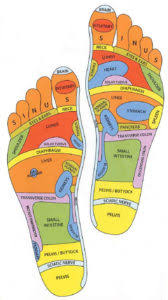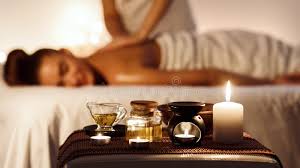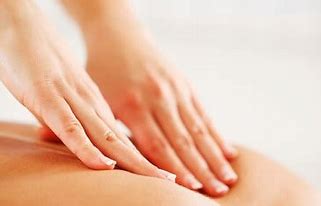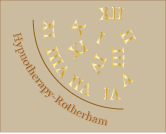REFLEXOLOGY
Reflexology is a non-invasive therapy performed on the feet or hands using special manipulation with varying degrees of pressure to provide both physical and emotional benefits.

HISTORY
Reflexology has been practiced throughout history and has appeared in different cultures and countries including Egypt, India, China, Japan, American Indians and more recently it was further developed in the early 20th century in America and the UK.
BENEFITS
- BALANCES ENERGY & AIDS RELAXATION
- PROVIDES PAIN RELIEF
- DETOXIFIES THE BODY
- INCREASES CIRCULATION
Angie trained locally to achieve a VTCT Level 3 Diploma in Complementary Therapies which includes Reflexology, Aromatherapy and Swedish Massage.
Treatment includes an exfoliating foot scrub prior to the Reflexology session.
* Reflexology is a complementary therapy; it is not intended to be a substitute for professional medical advice, diagnosis, or treatment. It is not a substitute for a medical examination, nor does it replace the need for services provided by medical professionals.
Always seek the advice of your medical professional before making any changes to your treatment. Any medical questions should be directed to your doctor.
AROMATHERAPY MASSAGE
 Aromatherapy is the use of essential oils extracted from plants to improve physical and emotional wellbeing. In addition to this, it helps to stimulate the body to heal itself and reduce stress thus improving health and wellbeing.
Aromatherapy is the use of essential oils extracted from plants to improve physical and emotional wellbeing. In addition to this, it helps to stimulate the body to heal itself and reduce stress thus improving health and wellbeing.
The essential oils are extracted from various parts of plants including petals; stems; barks; twigs; leaves; roots, seeds and resins. Application of essential oils includes inhalation such as with candles; immersion in the bath/shower, compresses and massage. Massage is the preferred medium of many as it is an excellent way of applying the oils to the body and increases the healing potential of aromatherapy.
HISTORY
The roots of aromatherapy can be traced back to the early Egyptian people 5,000 years ago, they had an extensive knowledge of aromatic plants and used the extracted oils for cosmetic, religious and medicinal purposes and to embalm their dead. The Greeks learned much of their knowledge from the Egyptians, Hippocrates used essential oils to rid Athens of the plague, and advocated everyone to have ‘an aromatic bath and scented massage every day’! The Romans learned their aromatherapy knowledge from the Greeks as many Greek doctors were employed in Rome. The Middle East has evidence of aromatherapy being used and studied by an Arab physician called Avicenna (AD980 – 1037, and in Europe aromatic herbs were commonly used by doctors in medieval times to kill germs.
BENEFITS OF AROMATHERAPY
- MANAGE PAIN
- IMPROVE SLEEP QUALITY
- REDUCE STRESS AND ASSOCIATED HEALTH PROBLEMS
- TREAT HEADACHES AND MIGRAINES
- SOOTHE ACHES AND PAINS
- IIMPROVE DIGESTION
- FIGHT BACTERIA, VIRUS OR FUNGUS
- BOOST IMMUNITY
Essential oils administered in different ways. They can be inhaled either in a bowl of water, vaporiser, candle burner or a candle; by immersion in a bath or shower with bath bombs/shower fizzers, mixed with milk or in a bag of oatmeal; used on a hot or cold compress, or absorbed by the skin in creams, balms or better still during a massage.
Angie trained locally to achieve a VTCT Level 3 Diploma in Complementary Therapies which includes Reflexology, Aromatherapy and Swedish Massage.
Treatment includes an aromatherapy massage to any of the following: back or abdomen or chest/neck/ face or arms or legs using a blend of aromatherapy essential oils made to your specific requirements onsite.
* Aromatherapy is a complementary therapy; it is not intended to be a substitute for professional medical advice, diagnosis, or treatment. It is not a substitute for a medical examination, nor does it replace the need for services provided by medical professionals.
Always seek the advice of your medical professional before making any changes to your treatment. Any medical questions should be directed to your doctor.
SWEDISH MASSAGE

Massage is the manipulation of the soft tissues of the body using the hands, wrists or arms in order to provide relaxation and rehabilitation of the underlying muscles. Swedish massage remains the basis for most forms of massage, it can be used in combination with other therapies such as aromatherapy or alone. Massage is beneficial to all body systems and is a natural and effective way to treat physical conditions.
HISTORY
Massage is not a technique derived from one culture but from many cultures around the world. The use of massage has been recorded in China from 3000BC in conjunction with movements on particular points on the body called ‘amma’, the Japanese also developed a system of massage but called the particular points ‘tsubo’. In India massage developed as part of the traditional Ayurveda medicine, the Greeks’ fifth century physician and teacher of Hippocrates believed all doctors needed to know how to use massage for healing purposes. At Roman and Turkish baths massage was always very important, even Gladiators were given massage prior and after their bouts of fighting and Julius Caesar the renowned Roman Emperor had massage daily.
Modern massage is based on techniques developed by Per Henrik Ling (1776 – 1839), who came from Sweden, and massage is still referred to as Swedish due to his influence.
BENEFITS
- IMPROVE SKIN TONE
- ENCOURAGE IMPROVED CIRCULATION
- ENCOURAGE BETTER LYMPH DRAINAGE
- ENCOURAGE DEEPER BREATHING
- RELIEVE MUSCLE FATIGUE, SORENESS AND STIFFNESS
- PROMOTE RELAXATION
- ENCOURAGE RESTFUL SLEEP
- SPEED UP DIGESTION AND WASTE REMOVAL
- BOOST IMMUNITY
- LIFT THE EMOTIONS
- INCREASED ENERGY
Angie trained locally to achieve a VTCT Level 3 Diploma in Complementary Therapies which includes Reflexology, Aromatherapy and Swedish Massage.
Treatment includes Swedish Massage to any of the following: back or abdomen or chest/neck/ face or arms or legs depending on your specific requirements.
* Swedish Massage is a complementary therapy; it is not intended to be a substitute for professional medical advice, diagnosis, or treatment. It is not a substitute for a medical examination, nor does it replace the need for services provided by medical professionals.
Always seek the advice of your medical professional before making any changes to your treatment. Any medical questions should be directed to your doctor.
